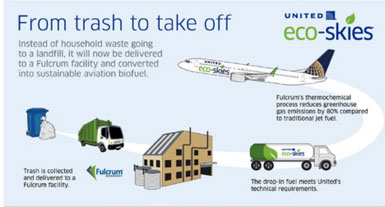One day after the Paris Climate Agreement entered force, all 190 countries signed onto another agreement – to rein in emissions from airlines.
After years of negotiations, international cap-and-trade for the airline industry was approved in Montreal, at the annual meeting of the United Nation’s International Civil Aviation Organization – a group founded for this purpose. It has long promised to be carbon neutral after 2020.
If no action is taken, the industry’s emissions are expected to double over the coming decades, from about 3% of world emissions now.
Without this agreement, the growth in emissions from aviation would have threatened “the international community’s ability to meet the Paris Agreement’s ambitious temperature goals and combat global climate change,” says the White House.
What They Agreed To
The agreement covers only international fights. Starting in 2020, countries participate voluntarily and in 2027, all countries with international airlines must cap emissions below 2020 levels. There will also be a carbon emissions cap on airplanes manufactured after 2020.
As of 2021, airlines from participating countries must buy credits if they exceed the cap. Credits support efforts to reduce global emissions, such as renewable energy installations and forest conservation. The cost to comply is expected to be less than 1% of revenue, a small price to pay for rewarding efficiency and renewable energy efforts of airlines. Every 3 years there will be a review process that considers improvements based on experience.
This is the first global cap on an international industry.
“By putting a price on carbon emissions from aviation, this market-based measure will provide an incentive to further technology improvements, air traffic efficiency improvements, and the development and use of sustainable alternative fuels,” says the White House.
At least 65 countries, including the US, China and EU, say they will participate in the voluntary phase.
Over recent years, the aviation industry has anticipated the pact by manufacturing more efficient jet engines, increasing purchases of biofuels and taking numerous steps on operational energy efficiency and running on electricity.
Last month, JetBlue announced a contract to buy over 330 million gallons of biofuels over the next 10 years – supplying about 4% of its total fuel. Last year, United Airlines began flying from Los Angeles to San Francisco on 30% non-edible oils like camelina and agricultural waste combied with 70% jet fuel.
Here’s how US airlines are ranked on efficiency.

